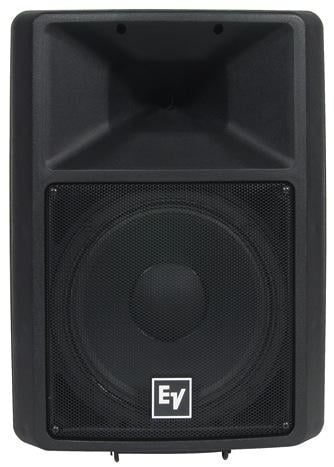Its possible to build active amp racks at relatively low cost with considerable DSP capability and output power using used install DSPs such as the Biamp Tesira and Chinese amps such as those made by Admark and Gisen. Using two 4ch amps and a DSP you can make a rack with 8 multi thousand watt amplifier channels for ~1500usd . You then have everything you need to drive speakers such as the Syntripp and PM60/90 and subwoofers such as the
TH-18 . Its a lot of work to build all this stuff but you would get a very capable and expandable system within your budget.
Please let me know how you are getting a Biamp Tesira, 8x1000w of amps, all the cabling (remember you need to convert at least 10 Phoenix block connectors to XLR), a rack, power distribution, a measurement mic, and a laptop to setup and tune for $1500.
Also FYI there is a reason Biamp products are used in permanent install corporate applications and not live sound. They are incredibly finicky and tedious to configure, as well as do not have latency-prioritized filtering like Marani, Linea etc... have. I have an old Forte I got from my friend who was doing a demolition (lol) and I spent like $100 to make xlr adapters, tried it once at a freelance gig, and it has sat in a drawer ever since. There is a reason CI processors are a dime a dozen: supply and demand.
Also, those Aliexpress Lab-Gruppen clones are only really suitable for subwoofer use. Pretty horrific higher frequency performance. Plenty of measurements on Avsforum and DIYaudio. They are also around $1000, each, landed in the USA, and about 2x overrated continuous power output.
By the time you search the used marketplace for used corporate AV gear, wait 3 months for your lab-gruppen clones to show up, spend 24/7 studying loudspeaker design and optimization, have the cnc shop machine the SynTripp throat adapter and woofer phase plugs, build everything, wait for all these parts to arrive, spend ages tuning and tweaking, you would have spent 3x as much money and 20x as much time as the guy who just bought a used Martin CDD-Live or Yamaha DZR Rig, hell he probably could have gotten a Meyer X40 or Danley setup, possibly even dipped his toes into used D&B Audiotechnik,.
I'm all for DIY (especially subwoofers), but it's a labor of love and you usually end up spending 3x of your initial estimated budget and time and noticeable bald spots from pulling your hair out. It makes a bit more sense if you already own amps and DSP and woodworking tools etc.
At OP's level of expertise, he should buy the nicest Powered PA tops he can (Yamaha, QSC, EV), stands
and a couple of these, a used DriveRack PA2, a used random higher power PA amp, and a DIY a Keystone Subwoofer over the weekend with his friends. You can have literally elementary knowledge to use the PA2, the auto eq works quite well. And that rig will blow anything else you can find out of the water in terms of fidelity for the ~$4500 budget presented, DXS18/ES18P, etc if he doesn't want to DIY
Or, If he can stretch the budget to $5300 then you are in full DZR315+DXS18
 www.yamahamusiclondon.com
www.yamahamusiclondon.com

 www.djkit.com
www.djkit.com




